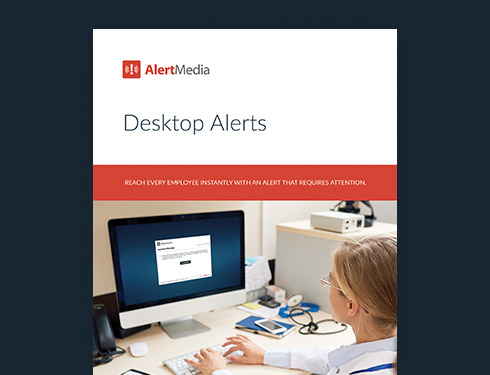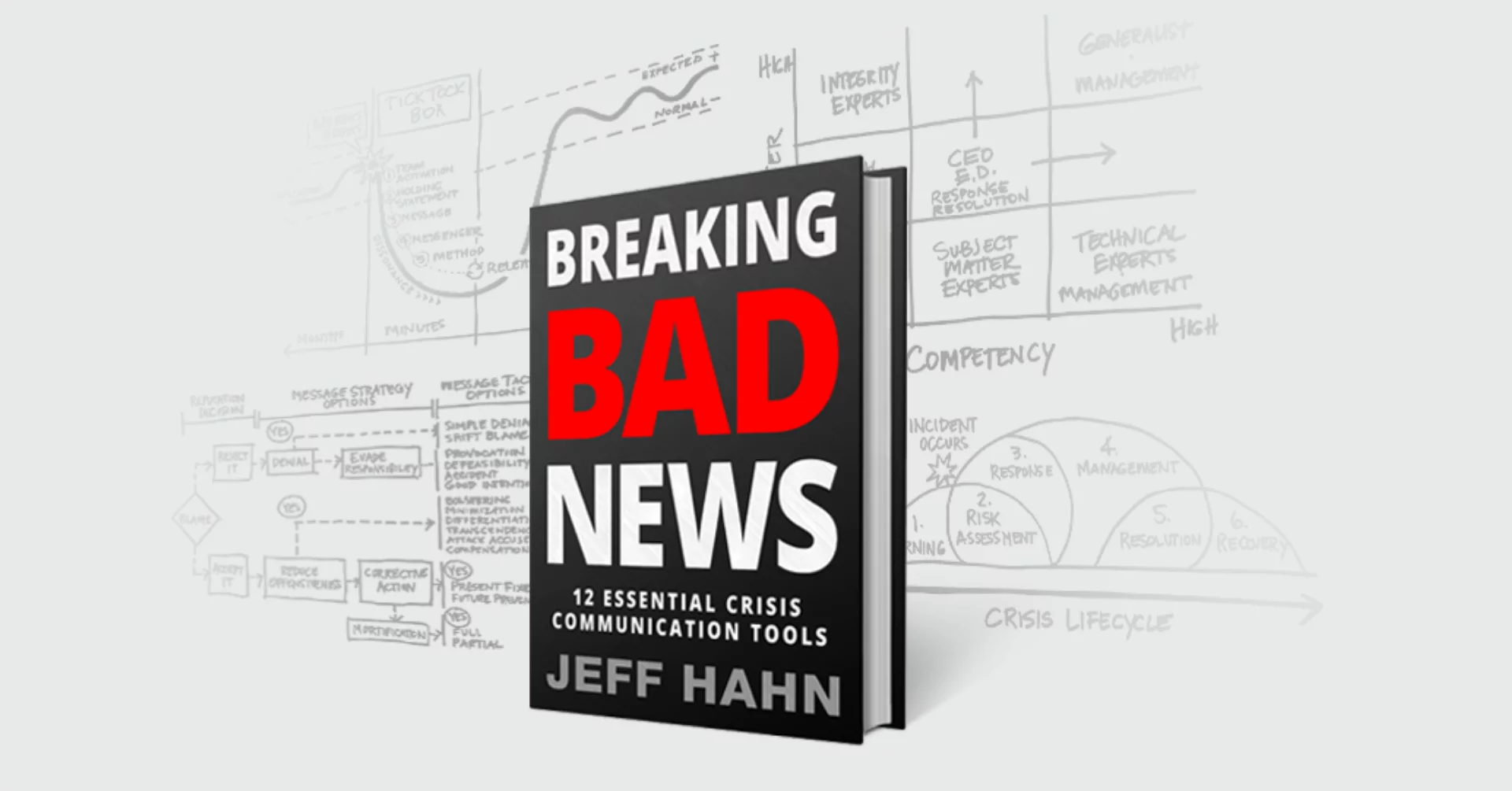
Employee Safety in a Workplace With a No Cell Phone Policy
Many businesses choose to have a no cell phone policy at work, but that can pose a challenge when an emergency arises. This article goes through what those challenges are and how to prioritize the safety of your employees without the use of cell phones.

During a crisis, immediately getting a hold of employees is of the utmost importance. For example, in the case of an active shooter event, there are mere minutes to warn employees so they can get to safe locations. Most active shooter events are over within 10-20 minutes, and a massive amount of damage can be done in that time—often before law enforcement arrives.
Alternatively, in the case of a fire, you only have a few minutes to evacuate a building and get everyone to safety. Most benchmarks for fire drills say that getting everyone out in two to three minutes is ideal (depending on the size of the building and how many people there are, this can reach up to 30 minutes). But that is just the ideal time for a drill. Every second lost during an actual fire means more risk for injury and loss of life.
That’s where good emergency communication comes in. Having a reliable way to reach your employees immediately when a disaster hits can be lifesaving. But not all businesses can rely on calling and/or messaging people’s cell phones.
For many businesses, running an efficient workplace means having spelled-out personal cell phone policies in place that limit or stop all use of cell phones while working or in specific workplace locations like within a clean room, warehouse, or while operating company vehicles.
There are many reasons why companies choose to implement no cell phone policies, such as to avoid personal calls, social media/app use, text messaging, and other disruptions at work or to ensure confidentiality policies and prevent a security breach. These policies can work for businesses of all kinds—from manufacturing facilities and warehouses to call centers and corporate offices. But, having a crisis communication plan and reliable way to reach employees should the need occur is even more critical when cell phones aren’t available.
Emergencies make it necessary to have reliable ways to get in contact with those at risk, and having a no cell phone policy at work can pose challenges to reaching employees when every second counts. Employees need to have a way to get critical information so they can stay safe. This article will go through a few of those challenges and lay out ways that companies can prioritize the safety of their team members without the use of cell phones.
The Challenges of Communicating Without Cell Phones
There are several legitimate reasons why companies might ban or restrict cell phone usage during work hours. These include improving productivity, lowering the risk of security leaks, safeguarding confidential information, and even increasing safety while driving.
However, taking away employees’ primary (and preferred) method of communication while at work can present significant problems as well.
Cell phones are the most direct line of communication for most people. Data shows that 97 percent of Americans own a cell phone 85% of which are smartphones, and 82 percent of workers keep their mobile devices within line of sight at work. This means that a call or message via a personal device is very likely to be noticed right away.
Companies that do institute a no cell phone policy generally turn to other solutions to communicate with employees on the clock. While these solutions may be sufficient during normal business hours and less critical forms of communication, too often they fall short during an emergency.
For example, after an active shooter incident in early 2021, family members and friends of those at the scene were forced to wait overnight before learning if loved ones were killed or hurt due to company policy that employees could not carry cell phones while working.

Some companies rely on landlines instead of cell phones to reach employees during these incidents, often using systems like phone trees to spread information. However, this is only helpful if the employee is within earshot of the phone and able to reach it, and if the phone tree has a 100 percent success rate (they almost never do). Workers who are mobile through a location or are just away from their station for a moment or for the day may be left without vital information.
Given that landlines are stationary solutions, they also limit your ability to communicate context as an event develops. This means that if someone gets instructions via landline during an emergency and leaves to act on them, there is no way to notify that person if the situation changes. This could be hugely dangerous in volatile situations like active shooter scenarios, natural disasters, or evacuations when quick shifts can occur frequently.
Organizations with a no cell phone policy often rely on word-of-mouth to communicate updates to employees. While word-of-mouth is sufficient for less-urgent updates, like a happy hour or catered lunch, it is a strategy that also poses issues during an emergency. Too often, people will never get the message or will get incomplete or even incorrect information about an event. And during an emergency, this can lead to serious consequences. It is also much slower to rely on what is effectively a game of high-stakes telephone than to directly message all employees at once. These challenges to communicating without cell phones must be addressed in order to keep employees safe. And staying safe at work is more than just a perk.
The Right to Safe Working Conditions
Every worker has the right to a safe working environment, and it is the legal responsibility of the employer to ensure that safety is upheld. This is what we call a business’s duty of care. There are many factors that go into creating a safe workplace, but effective communication is one factor that requires specific focus when there is a no cell phone policy in place.
On top of fulfilling your duty of care, prioritizing the safety of your workers will have a positive impact on your business. Employees who feel safe in their workplace are far more likely to stay longer, and they will be more engaged in their work and likely perform better than if they feel like the bottom line is more important than their health and wellness. You will also save time and money by avoiding workplace injuries with reliable communication.
In some cases, a no cell phone policy does mean your workers are safer, such as when driving is the primary activity. OSHA even has safe driving guidelines that suggest not talking on the phone while driving.
No matter what the policy serves, you need to make sure that you provide alternative means of contacting your employees quickly. Providing a variety of communication channels is the best way to do this.
How to Communicate Without Cell Phone Use
Focus on multichannel communication
The best way to communicate without cell phones in the workplace is through implementing multichannel communication plans, meaning there should be many different ways to reach employees. Having multiple channels of communication ensures that you will be more likely to reach everyone. If someone is away from their desk, for example, they may still hear an auditory announcement that goes out, even if they missed an email.
You want to make sure that you use every channel available to you. Here are a few examples:
- Email — Sending out an email is a great way to reach employees who use a computer daily but cannot have cell phone access, like call centers or high-security jobs. This can also reach employees who may not be on site but have notifications set up.
- Phone calls — Phone calls should go out to all available phones, including landlines, common area phones, and company mobile phones and employees should also be trained to always pick up calls, especially if there are phones located in common areas.
- Desktop alerts — Using a desktop alert system is a great way to reach employees who are at their desk or in front of a computer but may not be active in their inbox or do not have a landline. Many systems like AlertMedia’s Desktop Alerts have different levels of screen takeover you can deploy depending on the scale of the emergency and the importance of the message.
- Display monitors — If you have display monitors with internet access, you can also show important messages there using systems like AlertMedia’s Desktop Alerts. This is a great way to alert employees who may be mobile or walking from one area to another.
- PA announcements — Sending out important information on a PA system can also reach employees who may not be at their desk or station, and a PA system can cover more areas of a building where screens or phones can’t be placed. Adding speakers to parking areas and entryways can also help reach nearby employees.
These may not all be achievable for your business, but having as many as possible will give you a much better chance at keeping your employees safe. Using a reliable multichannel communications system can make it as easy as sending one message over multiple channels to reach everyone at risk.
Set communication expectations ahead of time
Just like you would explain the company cell phone policy you want to explain your communication plan. Once you have your channels set up and your plan laid out, you want to make sure your employees know and understand what is expected of them and how to use everything. Your employees should know where to look for important information when an emergency hits.
Running drills for major applicable risks can help everyone feel prepared—your employees will know how to listen for alerts, and your safety leaders will know how to send out the notifications and messages. Most people are only used to looking at their phones for important messages, so getting everyone on the same page about how to use the alternative communication channels will help them feel in the loop.
Final Thoughts
When danger strikes, the last thing you want your employees to be is unclear about what is happening and what to do. When lives are at stake, you need to be able to communicate quickly and easily. And in businesses with a no cell phone policy, it takes a little more effort to make sure that everyone is on the same page.
With a multichannel mass notification system like AlertMedia, and the added Desktop Alert feature, you can trust that you’ll reach your employees when it’s most important, even when they don’t have their cell phones.



![Disaster and Emergency Communication Plan—5 Steps [+Template]](https://www.alertmedia.com/wp-content/uploads/2022/03/BLOG-Emergency-Communications-Plan-V1.jpg)
